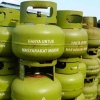Republic of Indonesia was once one of the world's main oil and gas producer. It was once joined OPEC since 1961 as one of the countries that have significant role in deciding global oil and gas output. In 2009, Indonesia ended its membership due to declining number of domestic production. It once rejoined in January 2016, but ended the membership again in November 2016.
The country lost its status as main oil and gas producer in the world. Furthermore, Indonesia became net oil importer since 2004, due to declining oil production and significantly increased consumption. The increased consumption was driven by high government subsidy on oil, which was eventually reduced slowly by the government during 2009-2014.
President Joko Widodo, implemented vital programs in oil and gas industry in his first term. His cabinet is currently trying to make the price of oil that directly sold to the people is same in all provinces and cities in Indonesia.
In 2020, BPH Migas set the target to expand the single fuel price policy to 83 new locations this year, 50 of which in Papua and 25 in Nusa Tenggara. Jokowi is also expected to make a critical decision on reducing industrial gas prices to US$6 per mmbtu by 2020 as promised in a 2016 presidential regulation.
Oil and gas prices has been very sensitive and volatile in the recent years, due to its importance in the world geopolitics. Global oil and gas prices decreased significantly since shale oil production boomed in 2006, started in United States. Production of shale oil made United States has a reduced import dependency on oil.
This has led to oil oversupply in the world, despite the effort by OPEC to intervene and stabilize global oil prices. Oil prices recovered in 2018, supported by the declining Venezuela's oil production. While gas consumption and prices also increased in 2018, because it is increasingly used in electricity generation. In 2020, oil and gas prices dropped down due to coronavirus crisis that hit the world.
Indonesia has vision to be a major oil and gas producer in 2030, with targets to produce 1 million bpd of oil and 12,300 million cubic feet of gas per day (mmscfd). The vision seen as an priority issue, because oil and gas are very vital as an production or export commodity for a country.
One of the steps needed to fulfill this plan is to open new plant of oil and gas production. According to SKK Migas, in 2020 they expect to start 12 oil and gas projects to come onstream.
The largest oil project currently planned is Energi Mega Persada's Malacca Strait Phase-1 facility with a production capacity of 3,000 bopd. While for gas production, the biggest that currently developed is Italian Eni's Merakes facility, which has an expected production capacity of 400 million standard cubic feet per day (mmscfd). Indonesia would prioritize to become major global gas exporter by 2030, as domestic oil production has been unable to reach export levels.
In 2019, Indonesia has two major projects that would help the country reach 2030 oil and gas production target. One of them is the continuation of the stalled gas project at the offshore Masela Block and the discovery of a giant gas reserve at the Sakakemang Block in South Sumatra.
In May 2019, Indonesia concluded an 18-year negotiation with Japan's Inpex Corp over developing a liquefied natural gas (LNG) plant in Masela, which will produce 9.5 million tons of LNG each year. Four months later, Spain's Repsol announced the discovery of an estimated 2 trillion cubic feet (tcf) gas reserve in Sakakemang -- the third-largest discovery in the Asia-Pacific last year. But, several experts warned that these new projects will be offset by declines at Chevron's Rokan PSC, Pertamina's Mahakam block, and Pertamina's wider operations across Java and Sumatra, that would make it more difficult to reach the 2030 production target.









